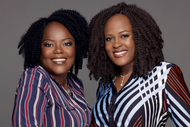Have you ever been excited to try a new skincare product only to find it did nothing for you? The reason may have been that it was the wrong product for your skin type.
When it comes to beauty, the only way to see success is to use products formulated for your specific skin type. Skincare products aren’t one-size-fits-all and it’s impossible to treat your skin properly if you don’t even know what you’re working with to start off.
Taking the time to learn your skin’s specific needs will help you not only choose the right items to balance skin but develop a healthier, more radiant complexion. And that’s the ultimate goal here, are we right?
Figuring out your skin type on your own can be a little complicated. That’s why we’re here to help you through all the confusion. (And don’t worry, this is a no shame zone!)

First, let’s break down all the different skin types, shall we?
- Normal: This skin type shows no oil production or flaky skin. The skin is smooth and soft to the touch (note: this is also the rarest skin type).
- Oily: Your skin gets greasy or shiny during the day and you may notice large pores.
- Dry: With this skin type, your skin may feel tight or show dead skin flakes throughout the day.
- Combination: This one gets a little tricky. You can see a little normal, a little dry AND a little oily. Whew! We told you it gets tricky. But a surefire way to tell if you have combination skin is if the skin is oily in the T-zone area and dry everywhere else.
From normal to dry and everything in between, here’s how you can determine your skin type:
Bare-Faced Method:
- Wash your face with a gentle cleanser to remove all makeup, oil and dirt
- After about 30 minutes, examine your pores. Larger pores indicate oily skin while no to barely visible pores mean dry skin. And larger pores in the T-zone with no visible pores on the cheeks is combination. If none of that is what you see, and your pores are neither enlarged nor invisible, you probably have a normal skin type.
- Pinch yourself. Yes, you read that correctly. If you pinch your skin and it snaps back nicely, your skin is well hydrated. That means you can rule out dry and combination skin. If it wrinkles easily under your touch, it’s dehydrated and you probably have dry or combination skin. After one hour, if your face feels tight, you have dry skin.
Blotting Method:
- Wash your face with a gentle cleanser and water. Use your hands to clean your face and avoid scrubbing too hard, as to not cause any unwanted irritation.
- Pat your face dry with a soft towel and leave your skin alone for about one hour without applying any products or touching it.
- Blot your skin with tissue or blotting paper. If there’s oil on your T-zone, but not your cheeks, you have combination skin. If you do the same test on your cheeks, and there’s an oily shine on your T-zone and cheeks, you have oily skin. The key here is to pay attention to the blotting paper. The blotting paper knows!
And there you have it, the foolproof ways to determine what type of skin you have. We hope this helps on your journey to flawless, beautiful skin. Happy washing!


